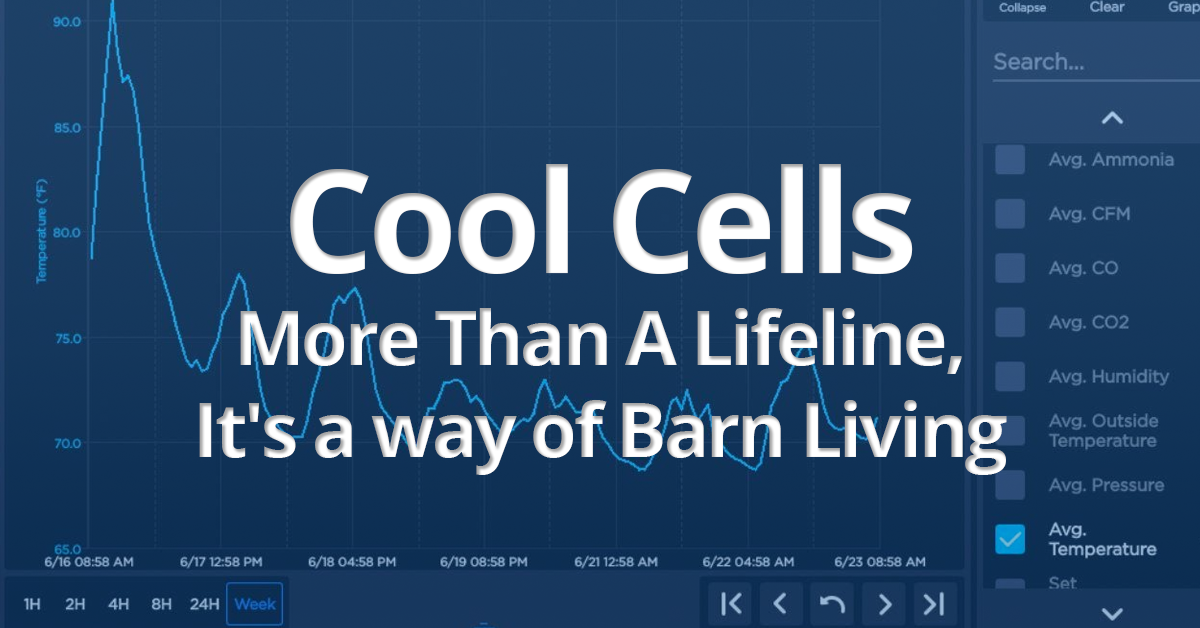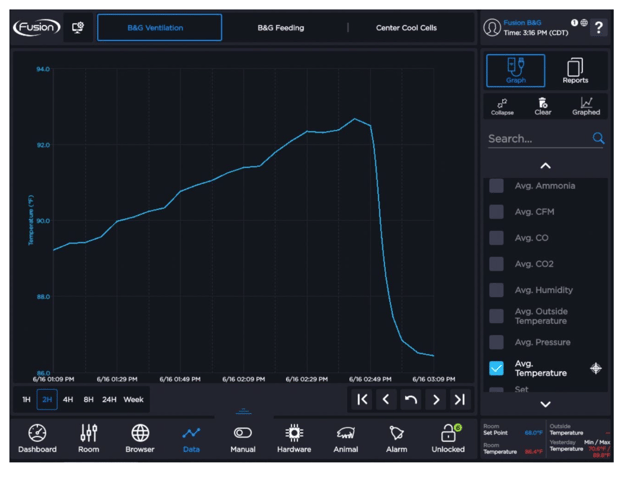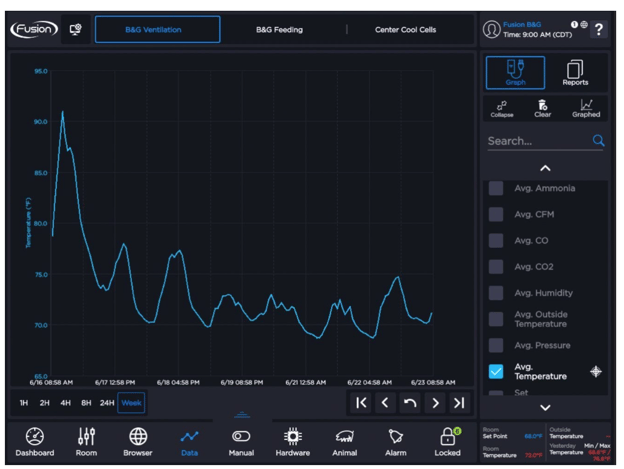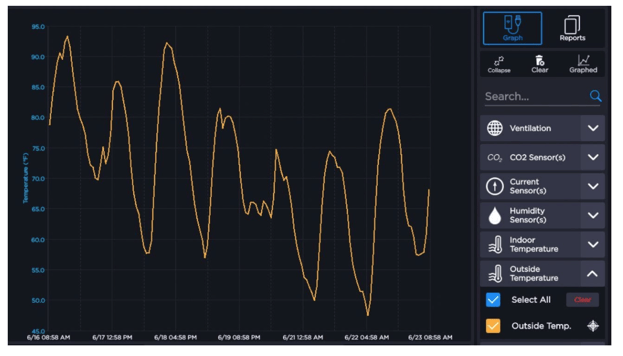
A week ago, I put up a screenshot of what happens when you turn on cool cells for the first time. We saw a temperature drop of more than 7° F in a 15-minute window, which was excellent and certainly made Michael at Goldenview Colony happy. There is, however, so much more to cool cells, and understanding how to maximize their effectiveness can allow even more impressive results.
Understanding Thermal Mass
With temperature regulation in livestock housing (where there is always significant air exchange), understanding how thermal mass affects the environment is necessary to good decision making. Thermal mass as applied to a barn is simply the "bulk" or mass of a building (concrete, wood, steel, and even the manure in the pit). All this mass is a storehouse for thermal energy. In essence, if the mass of the building is cooler than the ambient temperature, it will draw energy in. If the ambient temperature is cooler than the mass, then energy will be released into the air.
In a typical barn, a hot summer day would look something like this:
MORNING
In the morning, the barn starts cooler, and if the outside temperature has fallen below 70°F overnight, then the mass of the building will have released a significant amount of energy.
As the day warms up, the temperature within the barn trails the outside temperature as the thermal mass becomes a heat sink that sucks up some of the heat and begins to store it.
AFTERNOON
Later in the afternoon, the outside temperature will peak and either plateau or drop slightly and then fall in the evening.
The temperature within the barn will also peak shortly after the outside temperature does and plateau as well.
EVENING
As the evening cools off and the incoming air becomes cooler than the thermal mass of the building, the thermal mass will begin to release the heat back into the air. The temperature within the barn will stay relatively close to the daytime peak for several hours after the outside temperature starts to fall off.
If the outside temperature drops low enough overnight (lower than 70°F), the thermal mass will shed the bulk of the stored heat, and the cycle will repeat the next day.
RESULTS
You can usually see this cycle on graphs as the room temperature usually does not drop to a desirable level until the middle of the night but will lag the outside temperature in the latter part of the morning.
The wrench in this cycle is the problem I just detailed above: the thermal mass cannot shed the stored energy at night. In that case, if the outdoor temperature does not fall below 70°F but instead holds in the 75°F+ range, then the energy stored within the thermal mass does not get released. Then in the morning, when the temperature starts to rise once more, the heat sink we rely on to absorb heat during the day is "full" or fuller, if you will. In this scenario, the temperature in the room will peak sooner and likely rise more as the cumulative effect of body heat and air temperature cannot be put anywhere except out through the exhaust. If your exhaust power is high enough, this may be enough, but it will still get warmer sooner and stay warmer longer.
Enter Cool Cells
This is where the cool cells can be the rock star you need to maximize performance if you use them with thermal mass and its capabilities in mind.
Let us imagine (or look at the reality of the graphing in the pictures) for a moment and see what happens if we not only cool the mass as much as possible but help it stay cooler during the day. What you see in the screenshots below is that the whole barn starts to stay cooler even on hot days when the combined power of cooling and a giant heat sink work together to absorb heat energy during the day. Now we’re talking effectiveness! Now you can begin to see what the possibilities are!
initial temperature drop over fifteen minutes

Seven-day barn temperature graph following cool cell activation.

Seven-day outdoor temperature graph

I wanted to show all of this for one simple reason. I want guys to understand how important it is to stay in front of the heat when it comes to cooling. Too many managers view cooling devices as a form of rescue to help when everything else fails, but that is not the proper way to view or utilize cool cells. Cool cells should be used to give your barn a running start each day, a way to prevent needing rescue in the first place.
When you start thinking of how to achieve the best start to each hot day, your animals will thank you, your workers will thank you, and your wallet will probably thank you as well.





